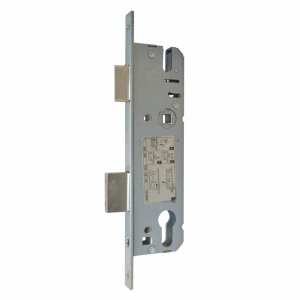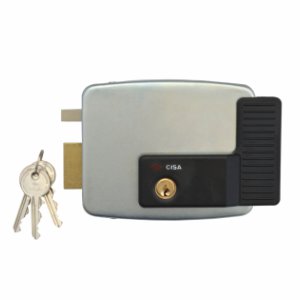What Types Of Lock Are There?
A lock provides the level of security you need in the home or workplace, and whether it is used on an internal or external door, a lock performs an integral role in your overall security system. The type of lock you need depends on the type of door you have, the practicalities of how the door is used, any regulatory controls over door access and use, and what types of risk the lock needs to protect you from.
As a result there are many different types of lock design available on the market. These serve different needs and are suitable for different types of door, so you would need to choose based on your individual requirements, but generally speaking you need to select a lock that is:
- Reliable
- Easy to operate
- Provides a mechanism for restricting access only to those authorised
- Unique – so access to the lock cannot be copied or the lock manipulated
- Strong and robust
Mechanical locks
There are many different types of mechanical lock, many of which are based on traditional designs that have been around for many years, but are established and reliable. These include:
- Deadbolts – these are typically used on external doors and come in three
 design types; single, double or lockable. Single deadbolts have a key cylinder on one side of the door and a thumb turn mechanism for locking the door manually on the other side. A double deadbolt, however, has a key cylinder on both sides. A lockable deadbolt is the same as a single deadbolt, except the thumb turn mechanism can be locked.
design types; single, double or lockable. Single deadbolts have a key cylinder on one side of the door and a thumb turn mechanism for locking the door manually on the other side. A double deadbolt, however, has a key cylinder on both sides. A lockable deadbolt is the same as a single deadbolt, except the thumb turn mechanism can be locked.- Knob bolts – here a rounded knob houses the lock cylinder, rather than the door itself, and the knob also acts as the mechanism for opening and closing the door.
- Handle bolts – these are usually found in internal doors and, like the knob bolt, the locking system is housed in the handle lever itself. These systems are common in healthcare settings or where disabled access is required.
- Padlocks – these are a very traditional security method and incorporate a portable locking system which is not integral to any part of the door design or structure. Padlocks can be operated by using a key, a combination keypad or a rotating number dial.
- Mortice locks – mortice locks are very common in commercial premises and are also sometimes called deadlocks or sashlocks. These types of lock are built into the structure of the door and hence are very robust. There is a huge variety of designs to suit all door sizes.
- Euro profile cylinders – Also known as DIN cylinders, these are often found in Europe and other global countries, but are also common in the UK with uPVC doors with multi-point locking systems. They have a single or double system much like deadbolts.
- Inter-changeable cylinders – again, these are common in commercial properties with high traffic and frequent usage. These locks are easy to re-key and you can swap the core of the locking system to upgrade it without having to take the whole body out.
- Nightlatch – these are also known as Yale locks, and they automatically lock when the door closes. The bolt can be locked from the inside, meaning the outside can’t be opened, even with the right key.
- Rim cylinder – these are a classic pin and tumbler design which houses a series of different length pins. When the correct key is used these pins align and are allowed to turn to open the door. This system is often used in tandem with the nightlatch and Yale lock system.
Electrical locks
- Keypads – an electrical lock can be opened by using a keypad and inputting the correct code or PIN number.
- Biometric locks – this is where a person’s fingerprint is placed on a sensor to activate the door opening, much like accessing a smartphone. This adds an extra level of security.
- Smart locks – simply using an app on a smartphone you can activate a lock with the touch of a button. These are useful for emergency access or remote access because the operator doesn’t have to be physically at the door to unlock it.
How to choose the correct lock type
The best way to choose the right locking system for your doors is to look at the different variables and assess which lock is most suitable to your needs. So different locks offer:
- Different levels of security
- Different practicality in terms of ease of use
- Suitability for internal or external doors
- Different access restrictions – so are you able to restrict access to nominated personnel as you would wish?
- Different levels of compliance with fire safety regulations
- Different levels of robustness and tamper-proofing.